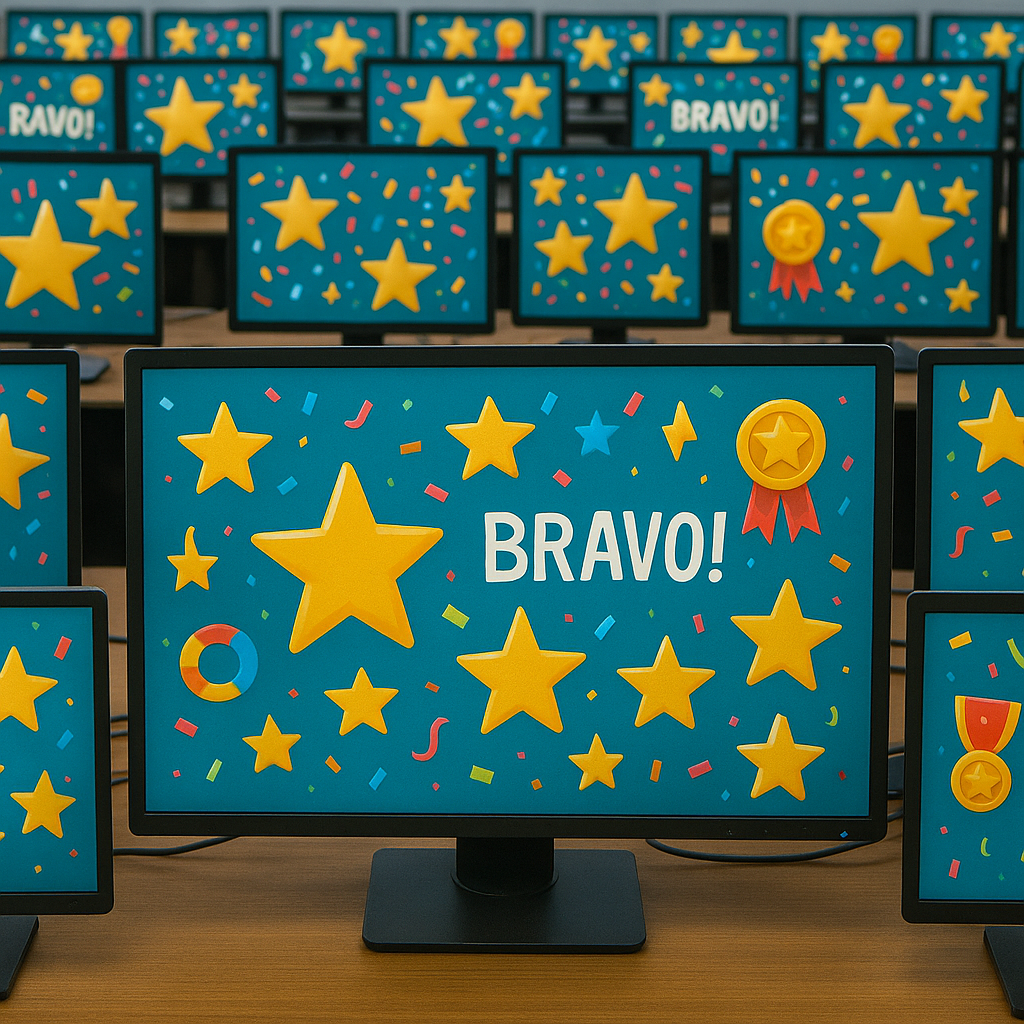Empowerment or Timefiller?
I confess: I became a binge-watcher of online study tools while studying learning coaching and developing a learning platform. Learning games, flashy tutorials, AI-based note generators – I saw it all. Many were entertaining. A lot looked pedagogically wrapped, but if we’re honest? Some of them were more like digital babysitters than effective tools. A feel-good activity labeled as support.
This rabbit hole got me thinking: What do teachers, students, and parents expect from “learning websites”? Are we talking about ready-made solutions? AI that spits out summaries? Or just content-related extras? And what world are we talking about – analog, digital, or is hybrid the future?
Let’s untangle expectations, look at what research says, and examine what actually works (and doesn’t) when it comes to learning support. And most importantly: let’s look at the key role of engagement. No matter what tool you’re using – learning needs commitment and work.

What do teachers, students, and parents expect from “learning websites”? Are we talking about ready-made solutions? AI that spits out summaries? Or just content-related extras?
What Is Learning Support, Really?
It’s not about doing the work for them
Learning support – digital or analog – is a big tent. It includes everything from tutoring and workshops to counseling and accommodations [1]. But at its core, it’s about giving students the tools to learn better themselves. Not doing the thinking for them. Think: teaching them to fish, not handing over fish sticks.
Good support helps students build skills, confidence, and autonomy. It guides problem-solving, encourages curiosity, and builds resilience. And yes, the research backs that up [1].
One Size Fits All? Not Quite.
Personalization isn’t a luxury. It’s a necessity.
Let’s be honest: the phrase “one size fits all” works better for ponchos than pedagogy. Every learner has unique needs, strengths, and quirks. Some need silence. Others thrive in noise. Some love diagrams. Others want bullet points. So why would one solution work for all?
Effective support respects those differences. Research shows that when students feel understood and autonomous, they’re more engaged, more motivated, and learn more deeply [2]. True support is offering choices and guiding students to find what works for them. Hard in an analog setting—probably even harder in a digital one.
Learning: So Many Expectations, So Little Agreement
From manicure courses to spontaneous Mandarin mastery
The word “learning” gets tossed around more than a beach ball on the last day of school. My brother once took an 8-hour manicure crash course that promised to teach everything – business strategy included. One of my friends swore he learned Mandarin just by listening to people on the subway. (He’s still my friend – even if I don’t quite believe him!)
The point? Learning is deeply personal. But expectations often aren’t. The risk? We expect fast, easy results from something that, in reality, takes time, reflection, and good support.
Hybrid Learning Support: The Best of Both Worlds
Why future-ready support blends digital and analog strategies
For teachers juggling 30 students, the challenge is real. And while technology can extend reach and offer tailored tools, human connection and in-person guidance remain irreplaceable.
The solution? A hybrid model. Combining the strengths of digital platforms (flexibility, accessibility, personalization) with the proven impact of human interaction and real-time feedback offers the most robust support. Blended approaches not only improve learning outcomes but also increase student engagement and satisfaction [6].
So let’s move beyond “digital vs. in-person” and embrace a hybrid approach: the best of both worlds to support students at their best.
From Binge-Watching to Building Tools
Lessons from building enduri
After watching dozens of tools promise to “fix” learning, I realized: most didn’t teach how to learn. That frustration became the spark behind enduri. We designed it not to deliver content, but to help students build skills that stick—and we built it with a hybrid support model in mind: the best of analog and digital support.
Here’s what we focused on:
a) Self-Analysis First
Real support starts with knowing yourself. enduri asks learners to create a Learner ID by reflecting on questions like: What helps me stay focused? This self-insight becomes the base for real improvement[5].
When students know they need visual aids or short sessions to stay focused, they can shape their own strategy. Metacognitive research confirms: learners who reflect on their habits learn better [4].
b) Learning by Doing (and Reflecting)
Students on enduri set goals, choose strategies, try them out, and reflect afterward. Did the strategy work? Would I use it again? This cycle of action and reflection builds independence over time.
c) Building a Strategy Toolkit
Instead of content, enduri offers a toolbox: memorization methods, planning techniques, reading tricks, and more [5]. Students experiment, find what fits, and make those strategies routine.
d) Communication & Motivation
enduri keeps teacher-student connections alive. Feedback and motivational messages can be exchanged directly. That small nudge or comment can make a big difference.
enduri’s Challenge: It Works – But It’s Work
The role of engagement
Arborana, a private school in Switzerland, has been part of the enduri development process from day one. With their insights, feedback, and classroom expertise, they helped shape enduri into what it is today. Because who knows better than teachers and students what works in real classrooms?
Using enduri now in class, both teachers and students appreciate its clarity and focus. But here’s the thing: enduri is work. That doesn’t mean it wastes time—in fact, it can save time with smart automation and AI support. But the real oxygen that powers enduri is student and teacher engagement. Repeating, adapting, reflecting: enduri provides the structure, but the student has to act. And to truly master a strategy? It takes more than a single try.
For teachers, the same applies. Coaching, giving feedback, offering guidance—enduri provides templates and knowledge, but they have to be used. More than once. Because effective support isn’t a moment – it’s a process.
In short: enduri works, but only if you do too.
Conclusion: There’s No Gold Medal for Generic Support
Structure instead of shortcuts
One-size-fits-all support? It’s easy, but it’s not effective. What works is empowering students to understand how they learn best and giving them the tools to act on it. And to truly support learners in today’s world, we need to stop choosing between digital or analog—and start designing for both. A hybrid model of learning support, grounded in strategy, feedback, and flexibility, offers the best chance at long-term success[6].
That’s the principle behind enduri: it’s not about giving students a shortcut. It’s about giving them a structure—digital and human, scaffolded and adaptive—that helps them build habits, independence, and real confidence If you’re a teacher, parent, or platform designer, don’t ask: How do I fix the student? Ask: How do I help them fix it themselves? That shift is everything.
That’s the idea behind enduri: empowering learners, not just supporting them. Not chasing gold stars, but building lasting habits that stick (…and maybe earning a few coins along the way). Because real learning doesn’t come from rewards alone. It comes from reflection, strategies, and knowing yourself.
And that’s support that actually works.
Sources
[1] OECD – Supporting Students in Developing Self-Regulated Learning
[2] The Education Hub – How to Support Student Autonomy and Enhance Motivation
[3] Education Endowment Foundation (EEF) – Metacognition and Self-Regulated Learning
[4] EEF Blog – Anchoring Curriculum Knowledge Using Metacognitive Strategies
[5] enduri – Learning Strategy Platform
[6] EDUCAUSE – 6 Models for Blended Synchronous and Asynchronous Online Course Delivery

